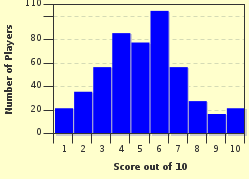Quiz Answer Key and Fun Facts
1. In early 1942, the Americans had broken the Japanese Naval Code. They knew something was up because a specific identifier was appearing in many messages. This identifier was the code for Midway Island. What was the identifier?
2. The Imperial General Headquarters issued what special command to Admiral Yamamoto to proceed with the capture of Midway Island and the invasion of Alaska?
3. The Marine Air Group on Midway had at their command 54 aircraft. Which of the following type of aircraft made up the majority of the planes?
4. The Japanese had four aircraft carriers at Midway. All four ships were attacked by American dive bombers and torpedo planes. This ship's commander, Captain Okada was killed by a bomb blast, but how did the ship actually sink?
5. Prior to the battle, one key element of the Japanese battle plan failed to be executed properly. This specific failure proved disastrous for the outcome of the plan.
6. One of the first attacks of the battle was not made by Japan, but by American B-17 bombers. They attacked the Japanese about 700 miles from Midway Island. What kind of ships were damaged?
7. The battle lasted just four days, ending on June 7th, but when were the last
servicemen involved in the battle rescued?
8. What was the last American ship sunk in the Battle of Midway?
9. Besides losing four carriers at Midway, what other event occured during the Japanese execution of their battle plan that changed the course of the war in the Pacific?
10. He died 52 years after the Battle of Midway on October 21st, 1994, taking with him some very vivid memories of the Battle of Midway. Who was it?
Source: Author
chetski
This quiz was reviewed by FunTrivia editor
bloomsby before going online.
Any errors found in FunTrivia content are routinely corrected through our feedback system.

